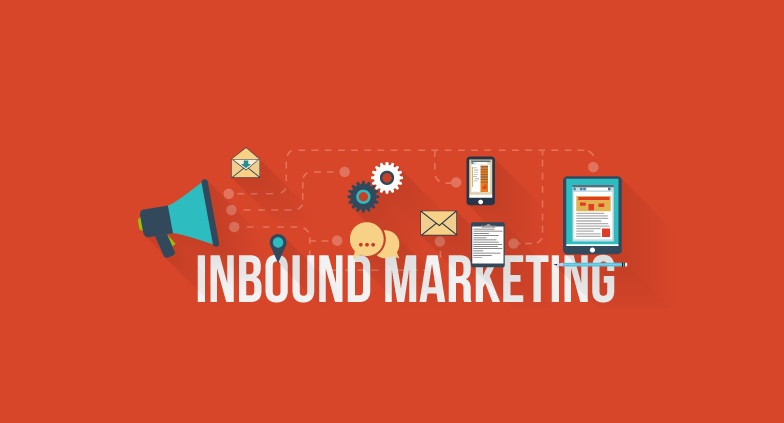Inbound marketing, in its simplest sense, is the process of helping potential customers find your company. This happens a lot before a customer is even ready to make a purchase, but making contact early can turn into brand preference and, ultimately, leads and revenue.
Inbound marketing is a strategy that uses many forms of marketing such as content marketing, blogging, events, search engine optimization (SEO), social media, and more all to create brand awareness and attract new business.
Whereas outbound marketing is looking for customers, inbound marketing focuses on visibility, so potential buyers come to you. Instead of “grabbing attention,” companies using inbound marketing focus on new approaches geared toward building awareness, developing relationships, and generating leads.
Inbound marketing is a strategic approach to creating valuable content that matches the needs of your target audience and inspires long-term customer relationships.
What is the purpose of internal marketing? Why is it important?
Inbound marketing reduces the need to go out and find new users. When customers come to you organically, you no longer have to spend a lot of time and money chasing down potential buyers.
This strategy can also increase customer confidence. And more than 80 percent of customers do online research before deciding what to buy. If you present your company as a reliable source in your field, your users are more likely to choose you.
Types of Inbound Marketing Content
These are some of the most common types of inbound marketing content – but even within these types, content can come in different shapes, sizes, and styles. Where inbound marketing is all about getting creative to meet the needs of your audience.
Content types:
- blogging.
- e-books.
- Graphs.
- Videos.
- Webinars.
- news articles.
- Research.
- Social media.
These are some of the most common types of inbound marketing content. Inbound marketing is also about getting creative to meet the needs of your audience.
How does inbound marketing work?
As inbound marketing depends entirely on what customers want and what they are looking for at the moment. It’s not about putting your brand in front of customers – it’s about being there and being ready when they’re looking for the things you have to offer. Successful inbound marketing happens when you produce high-quality content that your target audience truly engages with.
It is best when used with external marketing
It’s important to keep in mind that inbound marketing usually doesn’t work as effectively as possible when it’s the only marketing tactic you use. The key to a successful inbound marketing strategy is to create excellent content that can also be promoted through outbound tactics.
Then, you’ll have a library of engaging and relevant content across all your platforms, so your audience finds it through search, but it’s also available for you to promote if you need to.
Gives your audience what they’re looking for
Inbound marketing is a great way to inspire customer interaction that leads to buyer journeys and repeat customer relationships. For example, when you create an e-book that your website visitors like, they are more likely to submit their information and become potential customers. It’s also easy to combine inbound marketing tactics with marketing automation to move leads and new customers through the purchasing pipeline.
What does inbound marketing actually do?
The real and ideal result of inbound marketing is brand awareness and an engaged audience. Great inbound marketing content creates real interest in your brand from the people you want to become your customers. It helps people learn about your products and services and provides helpful answers to their questions.
It’s not just about sales
The engaged audience you create using inbound marketing will not only consist of qualified and perfect leads. In fact, inbound marketing rarely translates directly into sales. Instead, it translates directly to your brand’s reputation and what your audience thinks of you, which is sometimes more complex to manage than a sale.
It’s about helping people
Your inbound marketing content has the potential to help a lot of people solve their problems, generate repeat traffic to your website, and spark word-of-mouth promotion for your brand. If you do it right, you will also introduce a steadily growing pool of qualified leads to increased engagement with personalized content that will result in the conversion of sales and repeat customer relationships.
in conclusion
We hope all of this information is useful to organize your thoughts and learn more about inbound marketing and how we do it. If you want to continue learning, we recommend that you take a look at these articles.
SEO: The advantages (search engine optimization) of inbound marketing and how it can help you attract qualified traffic to your website.
Content: Content strategy is an essential part of inbound marketing. Discover the keys to creating relevant and valuable content to attract more visitors.
Social Networks: Social networks are essential channels for dissemination within your internal marketing strategy. Find out how to take advantage of both the membership and paid options.
Don’t forget the most important step: start your own inbound marketing strategy! If you’re looking for ways to attract and retain new clients for the long term, we’d love to help you achieve that goal and be part of your team. We can help you attract visitors to your website, and automate the communication process to make your life much easier.

